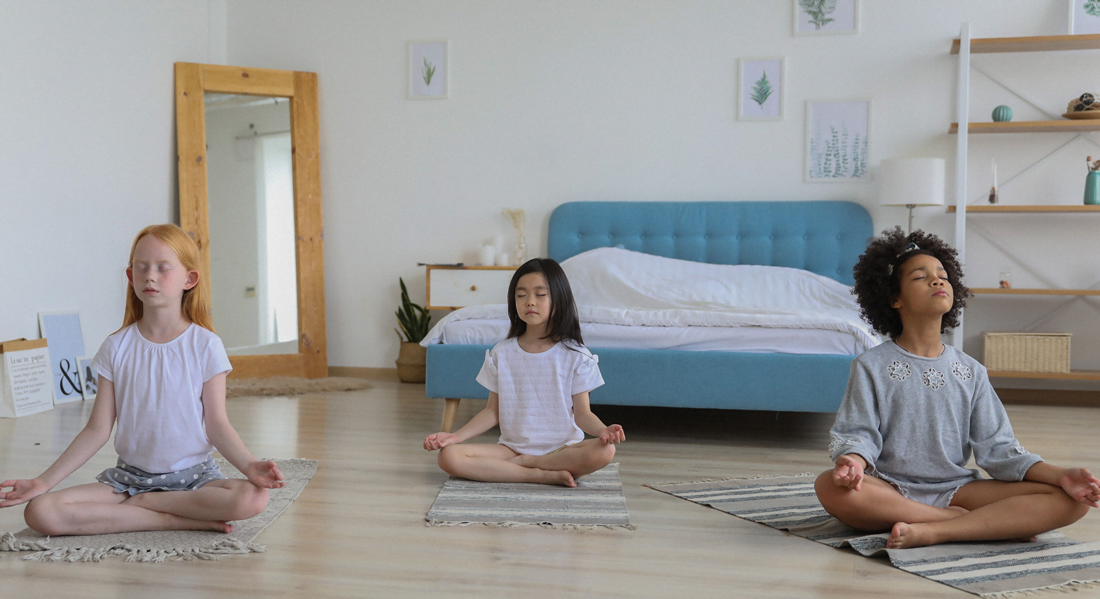You can’t underestimate the importance of meditation in today’s world. We’re constantly bombarded with info, noise and stress from all directions. That’s why meditation is so important – it gives you a chance to take a break and reconnect with yourself. It’ll help you find balance, peace and strength to deal with the challenges of modern life. Meditation for beginners doesn’t have to be hard. If you make meditation part of your daily routine, you’ll be able to experience physical benefits as well as mental and emotional ones that will make your life more meaningful.
What is Meditation?
Meditation is a mental practice and a state of consciousness that involves focusing one’s attention and eliminating distractions to achieve a clear and calm mind. It is an ancient technique with roots in various religious and spiritual traditions, but it is also practiced secularly for its numerous physical, mental, and emotional benefits.
Meditation is all about training your mind to be aware of the present moment, without getting distracted by any thoughts or external things. You’ll focus on what’s happening inside you; notice your thoughts and feelings without judging them, and you’ll feel calm and peaceful.
Tips on Meditation For Beginners
Choosing the right style of meditation for beginners can greatly influence the success and enjoyment of your meditation practice. Meditation is a personal journey, and there is no one-size-fits-all approach. Embrace the exploration and enjoy the process of discovering the meditation style that brings you the most benefit and joy.
Here are some tips to help you get started:
1. Understand Different Meditation Styles
Take the time to learn about various meditation styles. Common styles include Mindfulness Meditation, Loving-Kindness Meditation, Transcendental Meditation, Guided Meditation, and Body Scan Meditation, among others. Each style has its unique techniques and benefits.
2. Assess Your Goals
Consider why you want to meditate. Are you seeking stress relief, improved focus, better sleep, emotional balance, or spiritual growth? Different meditation styles can address specific goals, so knowing your intentions will guide you in selecting the right one.
3. Experiment and Explore
Don’t be afraid to try different meditation styles to see what resonates with you. Attend group meditation sessions or use meditation apps that offer various guided practices to get a taste of different techniques.
4. Consider Your Personality and Preferences
Some meditation styles may align better with your personality and preferences. For example, if you prefer structured practices, guided meditation might be a good fit. If you enjoy self-reflection and cultivating compassion, Loving-Kindness Meditation could be ideal.
5. Be Open-Minded
Keep an open mind as you explore different meditation styles. What works best for you might not necessarily be what you expect. Give each style a fair chance before deciding.
6. Start with Basic Techniques
Meditation for beginners is often best if started with basic and straightforward techniques. Mindfulness Meditation is a great option as it focuses on being present and observing thoughts without judgment, making it accessible for most people.
7. Seek Guidance
If you’re uncertain about which style to choose, seek guidance from experienced meditators or meditation teachers. They can provide insights and recommendations based on your specific needs and goals.
8. Listen to Your Intuition
Pay attention to how you feel during and after each meditation practice. Your intuition will often guide you toward the meditation style that resonates with you the most.
9. Be Patient and Persistent
Finding the right meditation style may take time and experimentation. Be patient with yourself and give the process the attention it deserves. Consistent practice will lead to a clearer understanding of what works best for you.
Meditation Techniques
Mindfulness Meditation
This is a specific form of meditation that involves intentionally focusing one’s attention on the present moment without judgment. It is derived from Buddhist traditions but has been adapted and secularized for use in various contexts, including psychology, healthcare, and general well-being.
The central concept in mindfulness meditation is cultivating mindfulness, which is the ability to be fully aware of one’s thoughts, emotions, bodily sensations, and the surrounding environment in the present moment. Rather than getting lost in the past or worrying about the future, practitioners of mindfulness meditation aim to anchor their attention in the here and now.
Loving-Kindness Meditation
Also known as Metta Meditation, is a form of meditation that focuses on cultivating feelings of love, compassion, and goodwill towards oneself and others. This practice originates from Buddhist traditions but has become widely adopted and secularized for its positive impact on mental and emotional well-being.
The main objective of Loving-Kindness Meditation is to promote a sense of interconnectedness, empathy, and benevolence. It involves directing positive intentions and well-wishes towards oneself, loved ones, acquaintances, and even strangers or difficult individuals. The practice involves repeating specific phrases or mantras to generate feelings of loving-kindness.
Guided Meditation
A form of meditation in which a narrator or teacher leads participants through a specific meditation session, providing verbal guidance and instructions throughout the practice. It is designed to help individuals relax, focus their minds, and achieve a state of inner calm and awareness.
Guided meditation is especially popular among beginners or individuals who find it challenging to meditate on their own. Having a voice to follow helps keep the mind from wandering and provides a structured experience for those new to meditation.
Transcendental Meditation (TM)
A specific form of meditation that gained popularity in the 1960s and continues to be practiced by millions of people worldwide. It is a trademarked technique and is often taught through certified instructors following standardized procedures.
Transcendental Meditation is a simple and easily learned practice that aims to promote relaxation, reduce stress, and enhance overall well-being. It is derived from ancient Vedic traditions and was introduced to the West by Maharishi Mahesh Yogi.
It’s important to note that while many people find value in Transcendental Meditation, some critics have raised concerns about the proprietary nature of the technique and the associated fees for instruction. There are other forms of meditation available that offer similar benefits without the need for certification or payment.
If someone is interested in learning Transcendental Meditation, they should seek instruction from a certified TM teacher to ensure they receive proper guidance and support in the practice.
Body Scan Meditation
A mindfulness practice that involves systematically bringing awareness to different parts of the body, from head to toe, without judgment or attempting to change anything. The primary goal of this meditation is to cultivate a deep sense of present-moment awareness and relaxation while developing a greater connection between the mind and body.
During a Body Scan Meditation, the practitioner lies down in a comfortable position or sits in a relaxed posture. The instructor or guided meditation typically directs participants to focus their attention on specific body parts, spending a few moments on each area before moving on to the next.
Body Scan Meditation can be practiced on its own or as part of a longer mindfulness meditation session. It is suitable for individuals of all ages and can be particularly helpful for those who experience physical tension, chronic pain, or wish to develop a greater sense of mindfulness and body awareness.
Creating the Ideal Meditation Space
Creating an ideal space for meditation for beginners can greatly enhance the quality of meditation practice. Having a dedicated and serene space can help you relax, focus, and find inner peace more easily. Here are some steps to create the perfect meditation space:
Choose a Quiet Location
Select a quiet area in your home or outdoors where you won’t be easily disturbed. Consider a spare room, a corner of your bedroom, or a peaceful spot in your garden.
Declutter the Space
Remove any unnecessary items and clutter from the chosen area. A clean and tidy space will help promote a sense of calm and clarity.
Add Comfortable Seating
Choose comfortable seating that supports an upright posture. Meditation cushions, a yoga mat, or a comfortable chair can be suitable options. Ensure that the seating is at a height that allows your knees to be lower than your hips.
Create a Relaxing Atmosphere
Add elements that promote relaxation and serenity. Consider incorporating soft lighting, such as candles or dimmable lamps. Natural light is also beneficial if available.
Use Calming Colors
Consider painting the walls in soothing colors, such as soft blues, greens, or neutrals. These colors can help create a tranquil environment.
Bring Nature Indoors
If possible, include elements of nature in your space. Indoor plants, flowers, or a small water feature can add a natural touch and contribute to a calming atmosphere.
Personalize with Meaningful Items
Add personal touches or items that hold special meaning to you. This could be a piece of artwork, a spiritual symbol, or a memento from a meaningful experience.
Eliminate Distractions
Minimize distractions in the space. Turn off electronic devices or put them on silent mode to avoid interruptions during your meditation.
Set the Right Temperature
Ensure the temperature in the space is comfortable for you. You may want to have a blanket nearby in case you feel chilly during longer meditation sessions.
Play Soothing Sounds
Consider playing soft background music, nature sounds, or meditation music if it helps you relax and concentrate better. Alternatively, enjoy the natural sounds around you, like gentle birdsong or the rustling of leaves.
Maintain Cleanliness
Regularly clean and maintain your meditation space. A clean environment can promote a sense of clarity and serenity.
Add Aromatherapy
Scented candles, incense, or essential oil diffusers can infuse the space with calming scents, enhancing your meditation experience.
Remember, the ideal meditation space is personal to you. It should reflect your tastes, preferences, and spiritual inclinations. Creating a space that resonates with you will make your meditation practice more enjoyable and fulfilling.
Overcoming Common Challenges for Beginners
Meditation for beginners, while highly beneficial, can present various challenges. Here are some common meditation challenges and strategies to overcome them:
Restlessness or Racing Thoughts
One of the most common challenges is a busy mind that jumps from thought to thought. Overcome this by gently acknowledging the thoughts without judgment and redirecting your focus to your chosen point of concentration, such as the breath or a mantra.
Impatience or Frustration
It’s natural to feel impatient or frustrated, especially when progress seems slow. Practice self-compassion and remind yourself that meditation is a skill that takes time to develop. Stay consistent and be patient with yourself.
Physical Discomfort
Sitting in one position for an extended period can lead to physical discomfort. Find a comfortable posture, use cushions or props if needed, and practice gentle stretches or yoga before meditation to release tension.
Falling Asleep
If you often find yourself falling asleep during meditation, try meditating at a time when you are naturally more alert, like after a light meal or in the morning. Sitting upright and avoiding meditating in your bed can also help stay awake.
Distractions
External noises or interruptions can disrupt your meditation. Try using earplugs, closing the door, or finding a quieter space. If you can’t eliminate distractions, acknowledge them and gently bring your focus back to your meditation object.
Remember that challenges are a normal part of meditation for beginners, and they often diminish with time and consistent effort. Embrace the difficulties as learning opportunities and be gentle with yourself as you progress on your meditation journey. Seeking guidance from experienced meditators or meditation teachers can also provide valuable insights and support in overcoming challenges.
Closing Thoughts
Meditation is an invaluable tool for anyone looking to reduce stress, increase focus and productivity, and improve overall mental health. Whether you’re a beginner or have been practicing meditation for years, it can help you find clarity in life’s challenges. With only 10 minutes of practice each day, the long-term benefits are immeasurable – so why not give it a try? You may be surprised at how quickly your mood improves when you make meditation part of your daily routine. Hopefully, this meditation for beginners guide has helped. So take some time out for yourself today and start reaping all the rewards that come with learning this ancient art!







